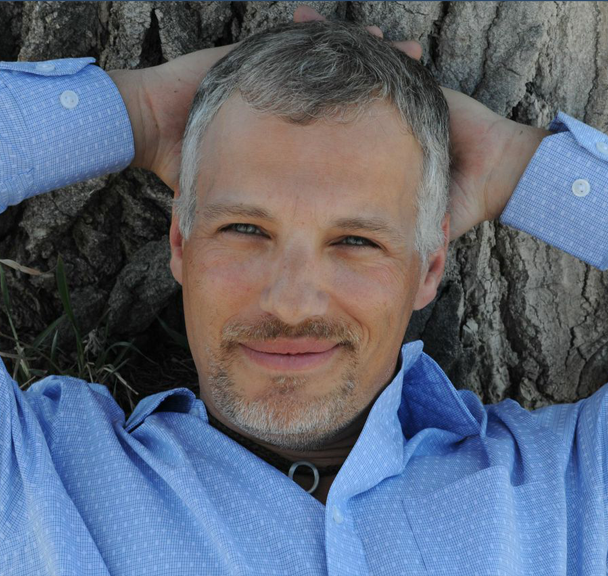Author Steven Craig Presents:
Truth: In 1,000 Words or Less
jumpstart domain was triggered too early. This is usually an indicator for some code in the plugin or theme running too early. Translations should be loaded at the init action or later. Please see Debugging in WordPress for more information. (This message was added in version 6.7.0.) in /wordpress/wp-includes/functions.php on line 6114

Steven is the author of Waiting for Today and is an accomplished writer who has composed a novel, screenplay, short fiction, opinion essays and poetry. His work has been published in a wide variety of highly respected publications.
Inspired by his love for the written word and a finely crafted story, Steven spent fifteen years teaching literature while honing his own craft in a myriad of artistic endeavors. It was his relocation to Breckenridge, Colorado, however, that finally provided the impetus to take time away from teaching and embark on the journey of a lifetime- the writing of Waiting for Today.
Truth: In 1,000 Words or LessThe idea, at first, was a simple one, conceived on a bus ride from Boston to Burlington, Vt as far back as 1995: What would you do if you lost what you loved most? What Steven did not know was that the journey of writing that novel would lead him to question the very nature of suffering and the human condition, only to find through the novel’s life-affirming conclusion that everything has its purpose.
Steven is recognized for his community involvement and for expressing his opinions in publications such as the Summit Daily News. His career includes working as a private high school English teacher, serving as the Admissions Director for the Peak School and writing literary fiction. Steven holds a BA from Colgate University and an MA in English Literature from the University of Vermont. He and his two children live in Breckenridge, Colorado. Contact Steven at craigdogs@yahoo.com
Asking a writing teacher how they write poses an interesting conundrum. You see, I am quick to acknowledge that I do not inherently write the way I teach others to write. I violate my own rules. I am a hypocrite of process. And with that, every former student of mine currently reading this just audibly vented their frustration and threw their morning coffee across the room.
One thing I do practice like I preach is outlining. Before I ever typed a single sentence of Waiting for Today, I had furiously outlined and envisioned every possible scene of the novel. Yes, even that last emotional scene in the hospital room and Jacob’s final word to God were in my head from the get-go. In a sense, the novel as it appears to the author is quite similar to how Buddhists contemplate time as a moving river: all the moments are simultaneously occurring and true. In my writing process, I see all events as the present, thus allowing me to write the entire novel with the ending in mind. This luxury of a conclusion informed by a preconceived outline is a luxury the protagonist does not have.
Where my writing process really differs from what I teach is in revision. My former students will readily nod in assent when I mention how I beat them into submission with the revision process. For them, I wanted drafts completed and then revised, but I just don’t work that way. I like to write a section, then hammer away at it until I feel it is right. It is hard for me to move on knowing that something that I am putting in my rearview mirror, even if only temporarily, is not quite right. Which isn’t to say that I don’t go back over it again as a completed whole. Waiting for Today got two long rewrites well after its initial completion. Time plus distance=perspective.
The two questions I am asked most by people after they have finished reading Waiting for Today are, “Are your characters based on real life people?” and “How do you create realistic dialogue?” The answer to the first question is a bit trickier than the latter. As an artist, even our imagination is confined by the parameters of the human experience. I can imagine characters only within the bounds of the people I have actually known. The fun of writing fiction is taking those attributes of people you have known and putting them together into a character whose attributes ring as true but to then envision circumstances for them that shape the reality of their being. This is the beauty of the creative process. Uncle Charles, often readers’ favorite secondary character from the novel, derives the Southern charm and quirky mannerisms that make him so endearing from the godfather of one one of my good friends. I knew “Charles” only briefly, but it was taking his genuine good-nature and beneficence and adapting them to this fictional character that became part of the rewarding experience of writing fiction.
As to dialogue, my advice to students always seemed obvious and unhelpful. “Try t o imagine a real conversation,” I would tell them, but I knew it wouldn’t much help. The reason is that most of us do not really listen to our own conversations. I am convinced that fiction writers, good ones anyways, play their own conversations over and over in their head. They deconstruct them and analyze them in a way few others care to. As I drive off in my car, I am always appreciating the tones of each person’s distinct voice and focusing on what makes them unique so that I can replicate them later. Like an impersonator, I study their diction, their intonation, their grammatical tendencies- all in the name of celebrating their own personal voice. This creates authenticity in dialogue. In that same car ride, I have often been known to consider possible replacement lines for myself and for others- the things we wish we had said but didn’t because we just weren’t that quick on the draw. With the hindsight of time, I can work out perfectly constructed lines, much like Gary’s great quip from Chapter 3, “I don’t do vaginas.” The glory of writing is time: time to write and rewrite the line so that we (or really the character) say it just right. And thus you come up with dialogue that moves, delights, and amuses.
 Asking a writing teacher how they write poses an interesting conundrum. You see, I am quick to acknowledge that I do not inherently write the way I teach others to write. I violate my own rules. I am a hypocrite of process. And with that, every former student of mine currently reading this just audibly vented their frustration and threw their morning coffee across the room.
Asking a writing teacher how they write poses an interesting conundrum. You see, I am quick to acknowledge that I do not inherently write the way I teach others to write. I violate my own rules. I am a hypocrite of process. And with that, every former student of mine currently reading this just audibly vented their frustration and threw their morning coffee across the room.
One thing I do practice like I preach is outlining. Before I ever typed a single sentence of Waiting for Today, I had furiously outlined and envisioned every possible scene of the novel. Yes, even that last emotional scene in the hospital room and Jacob’s final word to God were in my head from the get-go. In a sense, the novel as it appears to the author is quite similar to how Buddhists contemplate time as a moving river: all the moments are simultaneously occurring and true. In my writing process, I see all events as the present, thus allowing me to write the entire novel with the ending in mind. This luxury of a conclusion informed by a preconceived outline is a luxury the protagonist does not have.
Where my writing process really differs from what I teach is in revision. My former students will readily nod in assent when I mention how I beat them into submission with the revision process. For them, I wanted drafts completed and then revised, but I just don’t work that way. I like to write a section, then hammer away at it until I feel it is right. It is hard for me to move on knowing that something that I am putting in my rearview mirror, even if only temporarily, is not quite right. Which isn’t to say that I don’t go back over it again as a completed whole. Waiting for Today got two long rewrites well after its initial completion. Time plus distance=perspective.
The two questions I am asked most by people after they have finished reading Waiting for Today are, “Are your characters based on real life people?” and “How do you create realistic dialogue?” The answer to the first question is a bit trickier than the latter. As an artist, even our imagination is confined by the parameters of the human experience. I can imagine characters only within the bounds of the people I have actually known. The fun of writing fiction is taking those attributes of people you have known and putting them together into a character whose attributes ring as true but to then envision circumstances for them that shape the reality of their being. This is the beauty of the creative process. Uncle Charles, often readers’ favorite secondary character from the novel, derives the Southern charm and quirky mannerisms that make him so endearing from the godfather of one one of my good friends. I knew “Charles” only briefly, but it was taking his genuine good-nature and beneficence and adapting them to this fictional character that became part of the rewarding experience of writing fiction.
As to dialogue, my advice to students always seemed obvious and unhelpful. “Try t o imagine a real conversation,” I would tell them, but I knew it wouldn’t much help. The reason is that most of us do not really listen to our own conversations. I am convinced that fiction writers, good ones anyways, play their own conversations over and over in their head. They deconstruct them and analyze them in a way few others care to. As I drive off in my car, I am always appreciating the tones of each person’s distinct voice and focusing on what makes them unique so that I can replicate them later. Like an impersonator, I study their diction, their intonation, their grammatical tendencies- all in the name of celebrating their own personal voice. This creates authenticity in dialogue. In that same car ride, I have often been known to consider possible replacement lines for myself and for others- the things we wish we had said but didn’t because we just weren’t that quick on the draw. With the hindsight of time, I can work out perfectly constructed lines, much like Gary’s great quip from Chapter 3, “I don’t do vaginas.” The glory of writing is time: time to write and rewrite the line so that we (or really the character) say it just right. And thus you come up with dialogue that moves, delights, and amuses.